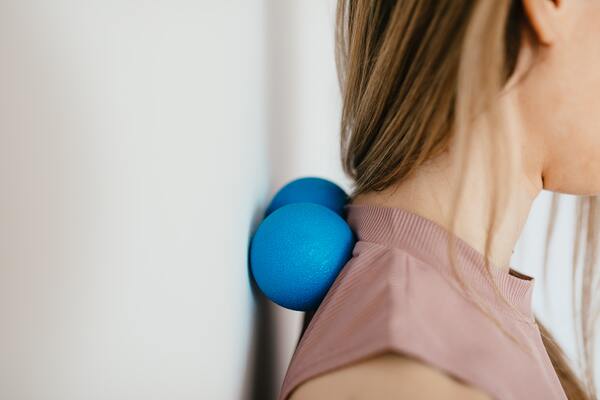If you have arthritis, you are aware that it can lead to a variety of problems, such as stiffness in the joints, soreness, and difficulty walking or engaging in your favorite activities. Your headaches may actually be caused by a more serious condition called cervicogenic headaches if you have osteoarthritis that affects the vertebrae at the top of your spine. To learn more about this issue, please read this article.
What Is Arthritis
The term “arthritis” is used to describe more than 100 different conditions that result in joint pain or a variety of joint diseases. Joint stiffness, swelling, and pain are common symptoms for those who have one of these illnesses. These symptoms can be severe or mild, persist or get worse with time.
Does Headache From Arthritis Exist
In fact, it can, and the most prevalent form of the condition, osteoarthritis, is where this most frequently occurs. Your immune system attacking the vertebrae in your neck is what is causing the pain instead of the head itself.
Your brain receives signals from your inflamed spine that there is some sort of pain in your neck, which affects the blood flow to your brain. Arthritis headaches or head pain may result from this in turn.
In actuality, your neck arthritis is what’s causing your head pain.
Why Does Arthritis Lead To Headache
Pain and inflammation can result from arthritis, which is the degeneration of a joint. Headache pain may be a symptom of arthritis damage to the first, second, or third vertebrae of your spine.
As your vertebrae deteriorate, pain may be referred to your neck, head, or jaw because sensitive nerves connect your scalp to the top parts of your spine.
Symptoms Of Arthritis In The Neck
The majority of people with neck arthritis experience no symptoms. Neck pain and stiffness, which can range in intensity from mild to severe, are typically the symptoms of neck arthritis.
Long periods of time spent looking up, or down, or engaged in activities that require holding the neck still, such as driving a car or reading a book, may make it worse. Resting or lying down usually helps relieve neck pain.
Other signs of neck arthritis could be:
- Headaches
- Grinding or popping noise or sensation when you turn your neck
- Muscle spasms in the neck and shoulders
- Trouble walking
- Weakness in the hands or legs
- Loss of balance
How Neck Arthritis Is Diagnosed
The first steps taken by your doctor are a physical examination and a history-taking. To determine whether your nerves or spinal cord are being compressed, they will measure your neck’s range of motion and test your strength, sensation, and reflexes.
When the pain occurs, they will inquire as to when your symptoms first appeared and what causes the pain to get better or worse.
For alignment evaluation and to check for arthritic changes, your doctor might ask for an X-ray and get an MRI to examine the neutral structure and discs if there is a possibility that the spinal cord or spinal nerves could be compressed. Shah.
To examine the bone more thoroughly and to determine whether any bony outgrowths are compressing it, a CT scan may be prescribed. However, the tests that are typically requested are MRIs and X-rays. If an MRI cannot be performed, a CT scan with a myelogram may be used.
Electromyography, or EMG, may be prescribed to check for nerve compression. An EMG examines the nerves in the arms’ electrical conductivity. According to him, this test would be useful if you have multiple compressed nerves or compression of the neck and arm nerves.
Your doctor may request blood tests to check for antibodies or signs of systemic inflammation that could indicate inflammatory arthritis, such as rheumatoid arthritis, psoriatic arthritis, or ankylosing spondylitis.
Treatment For Arthritis Headaches
The staff at Spine & Joint of Frisco can examine you for cervical spine arthritis if you believe your headaches may be caused by the neck pain you are feeling. We can frequently make a diagnosis using the patient’s history, a physical examination, and possibly an X-ray or an MRI.
Non-surgical options for treatment include facet joint injections, which are targeted injections of a steroid solution into the cervical spine’s arthritic joints under X-ray guidance to reduce inflammation. This is comparable to receiving an injection of steroids into the knee joint.
A fantastic, minimally invasive alternative might also involve radiofrequency ablation of the painful, sensitive nerves. Dr. Badiyan may suggest nonsteroidal anti-inflammatory drugs (NSAIDs) to help with your pain and lessen joint inflammation, along with physical therapy, massage, or focused application of heat.
You can also make many lifestyle and habit changes to lessen the effects of arthritis and slow the disease’s progression. Being overweight causes additional strain on your joints, so losing weight can help greatly.
This can be accomplished by engaging in regular, moderate exercise and making healthier food choices. We can help you find the ideal balance between rest and exercise to improve your health and lessen the symptoms of arthritis.
Home Remedies For Arthritis In The Neck
Even though you can’t stop age-related joint degeneration from occurring, you can try to slow its progression or ease symptoms by making small lifestyle changes. A few of the solutions listed below can help you manage neck arthritis pain.
Use Ice
To help decrease swelling, stiffness, and inflammation in the neck, apply a cold compress.
Sleep Right

If you prefer a certain type of sleep, use a pillow and bed that support that, advises Dr. A firm mattress and pillow are recommended if you prefer to sleep on your back. A medium-sized mattress and pillow are recommended for side sleepers. Choose a soft mattress and pillow for those who sleep on their stomachs.
Stop Smoking
If you smoke, give it up. A number of medications used to treat arthritis become less effective when smoked. Additionally, smoking can make it more difficult for you to engage in activities like exercise that reduce the symptoms of arthritis. “According to Dr. Bhatt.
Watch Your Computer Stance
When sitting at your computer, support your neck and back. To avoid having to adjust your neck position when looking up and down, keep your computer at eye level. “The monitor should always be at eye level when using a computer and keyboard.
Your body should be near your desk and your keyboard. If your employer offers it, an ergonomic evaluation of your workstation can help ensure that it is configured properly, according to Milani.
Use The Phone Correctly
Use a headset when speaking on the phone. That will lessen the strain on your neck. Due to people hunching over their smartphones, the term “text neck,” which refers to a repetitive strain, has even been coined. Neck muscle pain is made worse by this posture. Put your smartphone at eye level to read it instead of lowering your chin to do so. Your head won’t have to strain and drop constantly that way.
Alter Your Posture
Altering your posture can help relieve arthritis-related neck pain. Good posture is when the shoulders are back, the chest is open, and the ears are directly above the shoulders. Because the head’s weight is naturally balanced on the spine in this position, stress is minimized.
Final Words
Consult your doctor if you think your arthritis is to blame for your headaches. We should be able to work out a plan to minimize your discomfort and manage your symptoms together. For neck arthritis, surgery is usually a last resort. If you have severe pain that is not relieved by nonsurgical means or if you exhibit signs of neurologic injury, your doctor might advise it.



